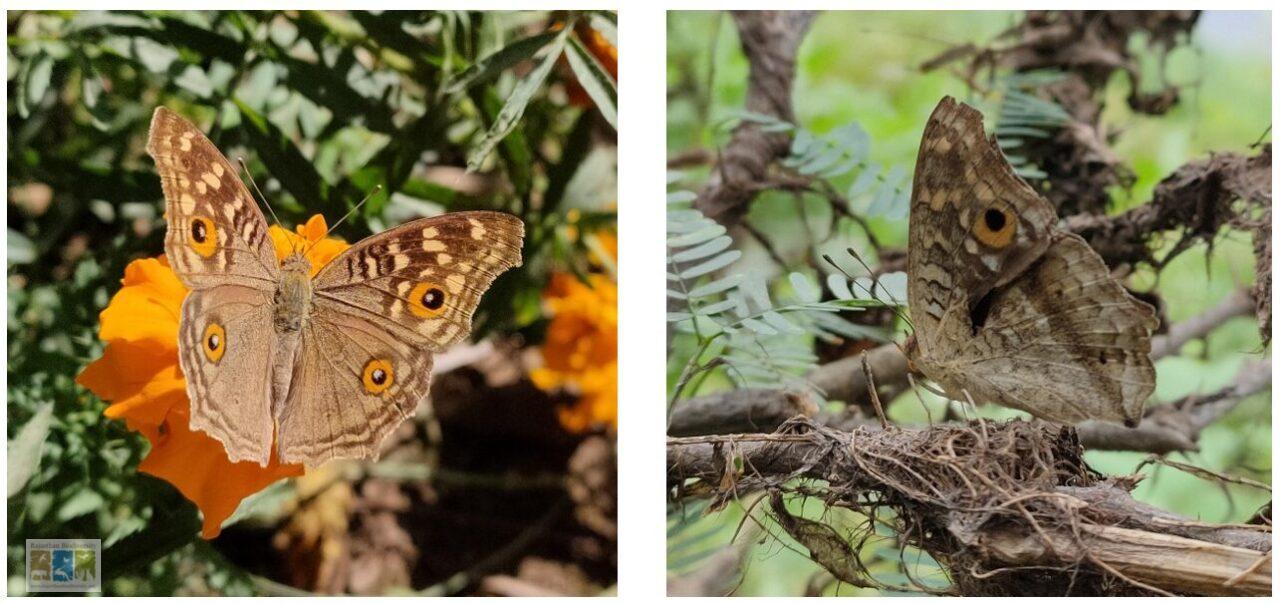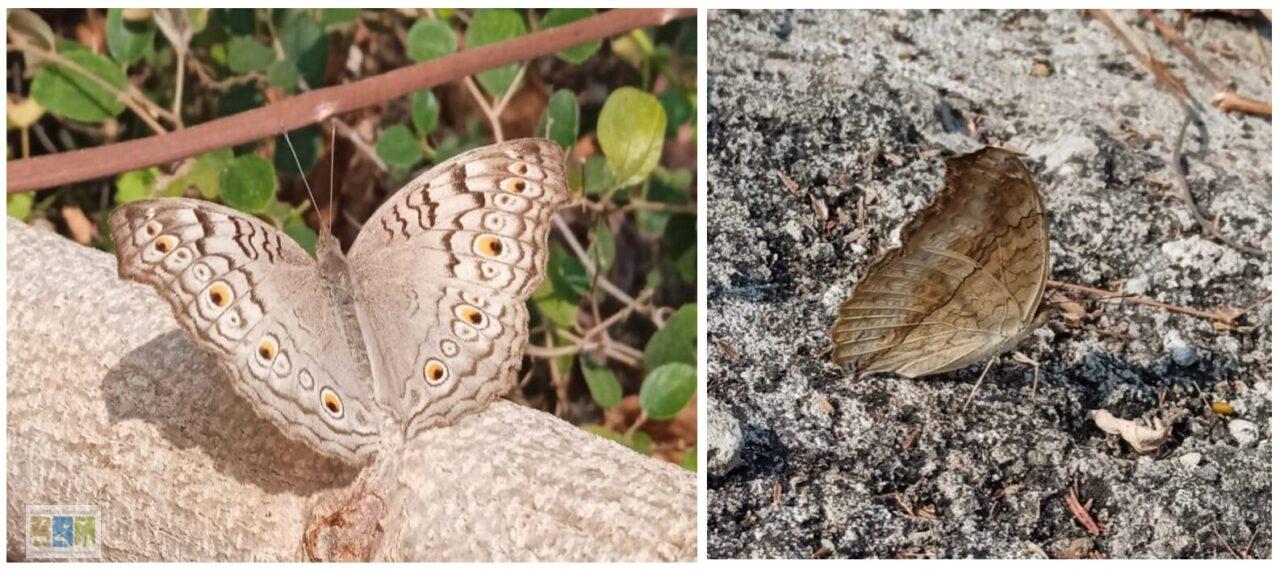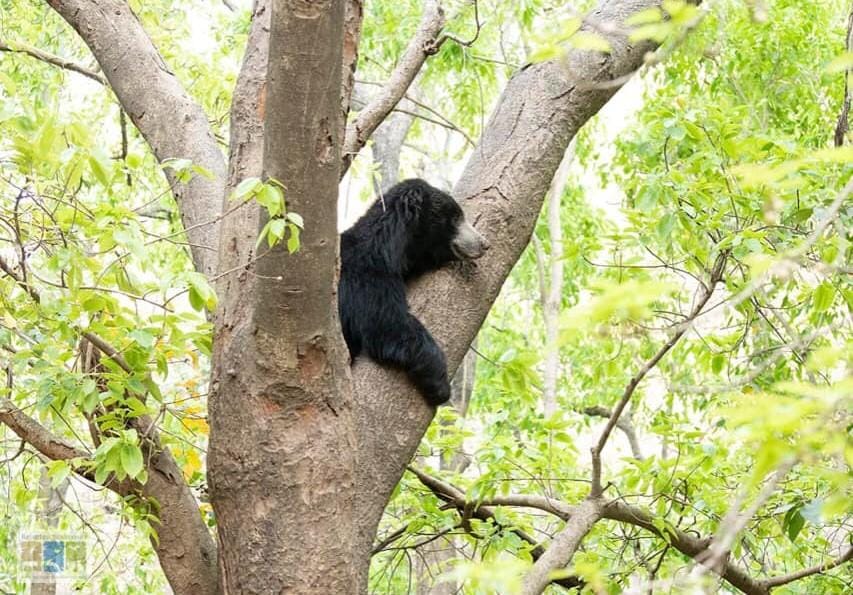
राजस्थान में पाई जाने वाली पैंसी तितलियां
प्रकृति और उसके विभिन्न जीव जंतुओं से हम हमेशा से ही आकर्षित होते रहे हैं और इन्हीं के कारण हमारे जीवन में रंगों और सुंदरता का महत्व है फिर चाहे वह रंग-बिरंगे फूलों हो या उड़ती हुई चिड़िया हो या फिर फूलों पर मंडराती तितलियां या अन्य कीट इन्होंने मनुष्य को सदैव लुभाया हैं। कीट वर्ग में सबसे सुंदर तितलियों को माना जाता है क्योंकि उनके पंखों की खुली सतह पर बहुत रंगों का एक साथ प्रयोग होता है। सामान्यतः तितलियों को हम हमारे आसपास बाग बगीचों, वन-उपवन और खेत खलियानों में यहां वहां उड़ती, फूलों का रस पीते हुए आसानी से देख सकते हैं।
दुनिया भर में सर्वाधिक जंतुओं में कीड़े सबसे ज्यादा मिलते हैं इन्हीं कीड़ों के अंतर्गत तितलियों को लेपिडोप्टरा गण में शामिल किया गया है। तितलियों की दुनिया भर में लगभग 18000 प्रजातियां पाई जाती है जिनमें से भारत से लगभग 1432 प्रजातियों को दर्ज किया गया है, जो दुनिया भर में पाई जाने वाली तितलियों का 8% हिस्सा रखती है। वहीं राजस्थान में लगभग 115 प्रजातियों की तितलियां होने का दावा किया जाता है।
पैंसी तितलियों का सामान्य परिचय
यह लेख राजस्थान में पाई जाने वाली पैंसी तितलियों के देखें जाने के संबंध में हैं। पैंसी तितलियों की भारत में छ: प्रजातियां पाई जाती है इन्हीं छ: प्रजातियों का राजस्थान में भी वितरण मिलता हैं। इन पैंसी तितलियों को कीट वर्ग के लेपिडोप्टरा (Lepidoptera) गण के Nymphalidae कुल के Junonia वंश में रखा गया हैं। इस वंश की तितलियों की संपूर्ण भारत व राजस्थान में छ: प्रजातियां पाई जाती हैं। जिनका विवरण इसी लेख में आगे उल्लिखित हैं।
यह पैंसी तितलियां सामान्यतः प्रकाश प्रिय होती हैं जो फुर्तीले स्वभाव के साथ मध्यम आकार की, तेजी से उड़ान भरने में माहिर हैं। इन तितलियों को हिंदी में मंडला या बनफशा भी कहा जाता हैं। यह तितलियां बहुत सुन्दर होने और रंग-बिरंगे होने के कारण भी इन्हें पैंसी (Pansy) नाम दिया गया है। इन तितलियों के अंग्रेजी भाषा में सामान्य नाम भी इनके रंगों के आधार पर रखे गए हैं। सामान्यतः पैंसी तितलियों के पंखों की खुली सतह पर दो से अधिक बडी व छोटी रंगीन चमकीली अंडाकार आंखों के समान धब्बेंनुमा संरचनाएं पाई जाती हैं। इन तितलियों के पंखों के रंग पैटर्न की विविधता प्रकृति में पाई जाने वाली सबसे आकर्षक और जटिल विकासवादी घटनाओं में से एक मानी जाती है। सभी तितलियों में नैत्र धब्बें (eye-spot) नहीं पाए जाते ये केवल कुछ ही प्रजातियों में देखने को मिलते है ये नेत्र धब्बें तितलियों को शिकारियों से सुरक्षा प्रदान करने और सूखे आवासों के साथ छद्मावरण में सहयोग करते हैं। सामान्यतः इन तितलियों के दोनों पंखों की निचली सतह गहरे कत्थई रंग की होती हैं जिसमें आई स्पॉट नहीं पाए जाते तथा बंद पंखों वाली अवस्था एक दम सूखे पत्तों जैसी दिखाई देती है।
सभी पैंसी तितलियों के लार्वा (caterpillar) अकारिकी रूप से समान होते हैं। लार्वा गहरे काले-भूरे रंग के होते हैं जिनकी सतह शाखित महीन कांटेदार संरचनाओं से ढकी रहती हैं। सामान्यतः सभी पैंसीस के लार्वा काम दिखाई देते है क्योंकि इन्हें खतरे का आभास होते ही यह पत्तियों के पीछे छुप जाते हैं या फिर अपने आप को जमीन में घिरा देते है और खतरा टल जाने पर वापस मेज़बान पौधे पर आ जाते हैं। इन तितलियों के लार्वा के मेज़बान पौधे ज्यादातर Acanthaceae परिवार के पौधे होते हैं जैसे- आपमार्ग, पिली/नीली/सफेद वज्रदंती, आडूसा, कागजंघा, रुएलिया तथा नीला कुरंजी वंश के पौधे इत्यादि।
पैंसी तितलियों का राजस्थान में वितरण
समान्यत: पैंसी तितलियां राजस्थान के संपूर्ण भू-भाग पर पाई जाती है। एवं इनका वितरण कुछ पैंसी तितलियां सूखे इलाकों में तो कुछ नम क्षेत्रों में पाई जाती हैं। शहरी क्षेत्रों में जहां बगीचे होते है वहा कुछ पैंसी तितलियों की प्रजातियां जैसे पीकॉक पैंसी(Peacock pansy), लेमन पैंसी (Lemon pansy) व ब्लू पैंसी (Blue pansy) अधिक देखने को मिलती है। कुछ पैंसी तितलियां खुले मैदानों, घास के मैदानों और पहाड़ी क्षेत्रों मैं पाई जाती है जैसे यैलो पैंसी (yellow pansy) व ग्रे पैंसी (grey pansy)। इनसे अलग चॉकलेटी पैंसी (Chocolate pansy) सीमित क्षेत्रों में जहां बड़ी पतियों वाली वनस्पतियां हों, प्रयाप्त छाया व नमी वाले क्षेत्रों में ही पाई जाती हैं। चॉकलेटी पैंसी राजस्थान में सामान्यत: उदयपुर संभाग व घना पक्षी अभ्यारण (भरतपुर) में देखी गई है।
राजस्थान में पाई जाने वाली पैंसी तितलियों की प्रजातियो का समान्य विवरण
The Lemon Pansy: इस तितली हिन्दी में नींबूई मंडला कहा जाता हैं जिसका वैज्ञानिक नाम Junonia lemonias हैं। यह एक मध्यम आकार की तितली है जिसके पंखों की ऊपरी सतह जैतूनी हरे रंग की, तथा मट-मैले पीले निशान पाए जाते है पंख भूरे रंग के होते है। तथा दोनों पंखों पर नीली-काली किन्तु नारंगी रंग से आवरित नेत्र धब्बें पाए जाते हैं। पंखों की निचली सतह हल्की कत्थई की जिसपर कोई धब्बें नहीं होते। यह प्रकाश प्रिय तितली है जो धूप अच्छी होने पर फूलों में अटखेलिया करती दिखाई देती है। पंख बंद करके सूखे पत्तों, टहनियों तथा दीवारों के साथ छद्मावरण करके बैठना पसन्द करती है ताकि शिकारी जीव आसानी से पहचान न पाए। ये कम दूरी की तेज उड़ान भरती है तथा जमीन के समीप उड़ती है।
लार्वा के मेज़बान पौधे: Justicia adhatoda, J.procumbens, Achyranthes aspera, Nelsonia sp., Barleria…etc

The Blue Pansy: हिन्दी में इसे नीली मंडला या नीली बनफशा कहा जाता है। तथा वैज्ञानिक नाम Junonia orithya हैं। इस तितली की पहचान इसके खुले पंखों की ऊपरी सतह पर नीले रंग से की जाती है और इसी से इसका नामकरण भी किया गया है। इस तितली के आगे के पंखों की ऊपरी सतह पर अंदर की ओर काला रंग अधिक प्रभावी होता हैं, बाहरी किनारे की ओर सफेद रंग की धारियां तथा हल्के भूरे रंग का जमाव पाया जाता हैं तथा दो काले-भूरे रंग की आंखें पाई जाती है। पिछले पंखों की ऊपरी सतह पर भी आगे वाले पंखों के समान ही अन्दर की ओर काले रंग के धब्बें लेकिन अपेक्षाकृत छोट तथा बाहर की ओर नीला रंग अधिक प्रभावी होता हैं। पिछले पंखों पर पाई जाने वाली आंखें बड़ी व मध्य में नीला निशान तथा इसके बाहर नारंगी रंग का अंडाकार घेरा पाया जाता हैं। यह तितली शहरी क्षेत्रों में बगीचों, खुले स्थानों तथा वनों में पानी के स्रोत के आस पास और सूखे पत्तों व पत्थरीली जमीन में पाई जाती है। इस तितली के पंख फैलाव सभी पैंसी तितलियों में सबसे कम होता है क्योंकि यह आकार में तुलनात्मक रूप से सभी से छोटी होती है।
लार्वा के भोज्य पौधो में Justicia procumbens, Justicia simplex, Barleria prionitis, Dicliptera paniculata…etc. Acanthaceae परिवार के पौधे शामिल हैं।

The Yellow Pansy: इस तितली को पिली मंडला या पीत बनफशा भी कहा जाता हैं। इसका वैज्ञानिक नाम Junonia hierta हैं। यैलो पैंसी के आगे के ऊपरी पंख चमकीले पीले रंग के होते हैं जिनपर काले रंग के निशान पाए जाते हैं। पिछले पंखों की ऊपरी सतह पर पीले रंग के साथ अंदर की ओर दुम के आसपास काले रंग के धब्बे पाए जाते हैं इस काले रंग के धब्बों के बीच में चमकीले नीले रंग का निशान पाया जाता है जो पंख की जड़ तक होता है। यह तितली सभी पैंसी तितलियों में सर्वाधिक जंगली आवासों में देखी जाने वाली है। यह तितली शहरी क्षेत्रों में काम दिखाई देती हैं। इसे खुले क्षेत्रों व पत्थरीले आवासों में धूप शेकते आसनी से देखा जा सकता हैं।
लार्वा के मेज़बान पौधो में Barleria prionitis, Barleria cristata, Hygrophila auriculata and Mimosa pudica (fabaceae). शामिल है।

The Peacock Pansy: इस तितली को मोरई मंडला या नारंगी रंग की होने के कारण नारंगी मंडला भी कहा जाता है। जिसका वैज्ञानिक नाम Junonia almana हैं। इस तितली के आगे के ऊपरी खुले पंख चमकीले नारंगी, जिनपर कत्थई रंग के निशान पाए जाते हैं। आगे के पंखों के नेत्र धब्बें असमान आकार के जिनके मध्य में सफेद-नीले रंग का गोल धब्बा जो दोहरी काली गोलकार रेखा से आवरीत होते हैं। पिछले पंखों पर भी आगे वाले पंखों के समान ही दो आंखें पाई जाती है लेकिन इनमें से एक अपेक्षाकृत अधिक बड़ी वह उबरी हुई होती है तथा दूसरी स्पष्ट वह काम उबारी हुई होती है। बड़ी उभरी हुई आंख के अंदर काले रंग का ढाबा वह साथ ही सफेद रंग के छोटे निशान होते हैं यह भी दोहरे आवरण युक्त काली गोल रेखाओं से घिरा रहता है। यह तितली शहरी क्षेत्रों में फूलों का रस पीती हुई तथा उन पर मंडराती हुई अधिक देखी जाती हैं। समान्यत: यह तितली अपने पंखों को फैला कर बैठती है लेकिन सुखे आवासों या सुखे पत्तों पर यह अपने पंख बंद करके बैठना पसन्द करती हैं क्योंकि पंख बंद करने के बाद ये सुखे पत्तों के समान ही दिखाई देती है तथा आगे वाले पंख का बाहरी किनारा हुक के समान मुड़ा हुआ दिखाई देता हैं।
लार्वा के भोज्य में Barleria prionitis, Hygrophila auriculata, Ruellia tuberosa, Phyla nodiflora इत्यादि शामिल हैं।

The Grey Pansy: यह ध्रुसर/मलाई रंग की बेहद खूबसूरत तितली हैं। इसे ध्रुसर मंडला भी कहा जाता हैं। इसका वैज्ञानिक नाम Junonia atlites हैं। इस तितली के अग्र पंखों की ऊपरी सतह पर काली पट्टीया पाई जाती हैं। आगे व पीछे वाले दोनों जोड़ी पंखों के बाहरी किनारे पर नारंगी व काले छोट-बड़े नेत्र धब्बों की पंक्ति पाई जाती हैं। पंक्ति में कुछ धब्बें रंगीन तो कुछ हल्के ध्रुसर रंग के होते है तथा रंगीन नेत्र धब्बें लगातार न हो कर कुछ अन्तराल में व्यवस्थित होते हैं। इस तितली के दोनों पंखों की निचली सतह पर, जब ये पंख बंद करके बैठी हो, तब लगभग पंखों के मध्य से एक हल्के काले भूरे रंग की सीधी रेखा गुजरती हुई दिखाई देती हैं। तथा दोनों पंखों की निचली सतह के बाहरी किनारो पर हल्के नेत्र धब्बें उभरे हुए दिखते है। यह तितली धीमी गति से तथा धरती की सतह के नज़दीक उड़ना पसन्द करती हैं। बरसात व हल्की सर्दि के दिनों में बाग बगीचों के फूलों पर मंडराती हुई, रस पीती हुई अधिक देखी जाती हैं। खुले क्षेत्रों में सुखे हुए घास तथा पत्तों पर पंख फैलाकर बैठना या धूप सेंकना इसे अत्यंत प्रिय हैं।
लार्वा के भोज्य पौधो में Lepidagathes cuspidata, Justicia procumbens, Dicliptera paniculata, Sida rhombifolia, Corchorus capsularis इत्यादि शामिल हैं।

The chocolate Pansy: यह गहरे भूरे रंग की होने के कारण इसे चॉकलेटी मंडला(Chocolate pansy) कहा जाता हैं। इस तितली के अग्र पंखों की ऊपरी सतह गहरे भूरे/कत्थई रंग की जिसपर अन्य पैंसी तितलियों के समान नेत्र धब्बें नहीं पाए जाते, लेकिन कत्थई रंग की धारियां पाई जाती हैं। पीछले पंख भी अग्र पंखों के समान, लेकिन पीछले पंखों की ऊपरी सतह के बाहरी किनारो पर हल्के भूरे रंग के काम उभरे हुए या अस्पष्ट नेत्र धब्बों की पंक्ति दिखाई देती हैं। ये तितली छायादार तथा नम क्षेत्रों में पाई जानें के कारण इसकी राजस्थान में सीमित उपलब्धता हैं जबकि अन्य पैंसी तितलियां धूप वाले खुले क्षेत्रों को अधिक पसन्द करती हैं। चॉकलेट पैंसी सभी पैंसी तितलियों की प्रजातियों में से सबसे बड़ी है तथा इसका पंख फैलाव भी सबसे ज्यादा हैं। ये तितली फूलों तथा पक्के हुए फलों या सड़े हुए फलों का रस पीना पसंद करती हैं। यह सुखे पत्तों या सुखी वनस्पतियो के साथ पूर्ण रूप से छद्मावरण कर लेती हैं जो इन्हें शिकारी जीवों से बचाएं रखने में मददगार साबित होता हैं।
लार्वा के भोज्य पौधो में Barleria cristata, Dipteracanthus prostratus, Ruellia simplex, Ruellia tuberosa, Strobilanthes callosus, Astracantha longifolia, Erathemum roseum शामिल हैं।

References
- Arun Pratap Singh: Butterflies of India
- iNaturalist: https://www.inaturalist.org/
- India Biodiversity Portal: https://indiabiodiversity.org/
- Isaac Kehimkar: The Book of Indian Butterflies
- Kumar Ghorpade: Butterflies of Keoladeo national park, Bharatpur, Rajasthan.
- Kunte, K., S. Sondhi, and P. Roy (Chief Editors). Butterflies of India, v. 4.27. Indian Foundation for Butterflies. URL: https://www.ifoundbutterflies.org.
- Lekhu Gehlot et.al :Sighting and Documentation of lepidoptera from urban region of Jodhpur, Raj.
- Rashtriya Titli Namkaran Sabha. 2024. Butterflies of India: A Checklist of Hindi Names. A version for public Consultation. Indian Foundation for Butterflies Trust, Bengaluru. 25pp.
- Rohan Bhagat: Checklist of Butterflies from MHTR, Rajasthan.
- Sunita Rani & S.I. Ahmed: Diversity & seasonality of butterflies in STR, Rajasthan.












